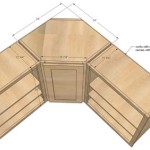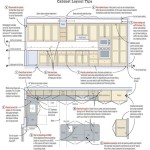Essential Aspects of Kitchen Cabinet Organizer Installation
Kitchen cabinet organizers provide invaluable storage solutions, helping to maximize space, maintain organization, and enhance the functionality of your cooking space. Installing kitchen cabinet organizers requires careful planning and attention to detail. Here are some essential aspects to consider for a successful installation:
1. Determine Your Needs and Space Requirements
Start by assessing your kitchen cabinet's storage needs. Determine the types of items you want to store, their size, and the amount of space you have available. Measure the width, height, and depth of the cabinet carefully to ensure the organizer fits seamlessly.
2. Choose the Right Type of Organizer
There are various types of kitchen cabinet organizers available, including pull-out drawers, shelves, lazy Susans, and drawer dividers. Consider the specific needs of your cabinet and the items you want to store to select the most suitable organizer.
3. Measure and Mark the Installation Points
Once you have chosen the organizer, it's crucial to measure and mark the exact installation points. Use a level to ensure the organizer is aligned correctly. Transfer these measurements to the cabinet's interior and mark the screw holes or mounting points.
4. Prepare the Cabinet
Before installing the organizer, make sure the cabinet is clean and free of any obstructions. Remove any existing shelves or dividers that may interfere with the installation. If necessary, use a screwdriver or drill to create the required holes or mounting points.
5. Install the Mounting Brackets or Rails
Most cabinet organizers come with mounting brackets or rails that need to be attached to the cabinet's interior. Secure these brackets or rails using the provided screws or bolts. Ensure they are securely fastened to provide a stable base for the organizer.
6. Insert the Organizer
Carefully lift the organizer into place, ensuring it aligns with the mounting brackets or rails. Slide it in until it's fully seated and secure. Some organizers may require additional screws or fasteners to ensure a snug fit.
7. Adjust and Test
Once the organizer is installed, test its functionality by opening and closing the drawers or shelves. Make any necessary adjustments to ensure smooth operation and proper alignment. Ensure the organizer does not interfere with the opening or closing of the cabinet door.
8. Secure the Organizer
Depending on the type of organizer, it may require additional securing measures. Use screws or bolts to fasten the organizer to the cabinet's interior or walls to prevent it from moving or shifting.
Conclusion
By following these essential aspects, you can ensure a successful installation of kitchen cabinet organizers. These organizers will help you maximize storage space, keep your kitchen organized, and improve the overall functionality of your cooking area. Remember to consider your specific needs, choose the right organizer, and pay attention to detail during the installation process for optimal results.

60 Clever Cabinet Organization Tips To Double Your Storage 2024

Kitchen Storage Cabinets The Best Pot Rack And Cabinet Organizers

7 Interior Organizers That Will Improve The Utility Of Your Cabinets Residential S

18 Smart Storage Ideas That Will Save You So Much Kitchen Space The Singapore Women S Weekly

60 Clever Cabinet Organization Tips To Double Your Storage 2024
Review Simplehuman Pull Out Cabinet Organizers Eliminate Kitchen Clutter

30 Kitchen Cabinet Add Ons You Can Diy Family Handyman

How To Easily Add Drawers Kitchen Cabinets Small Stuff Counts

Odoroku Stackable Drawer Rack Pull Out Storage Design Simple Installation With Singapore

How To Install Drawer Pullouts In Kitchen Cabinets Ers
Related Posts








